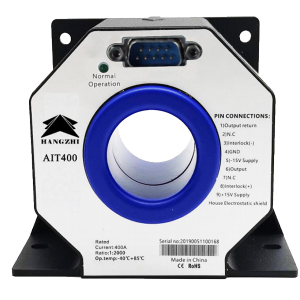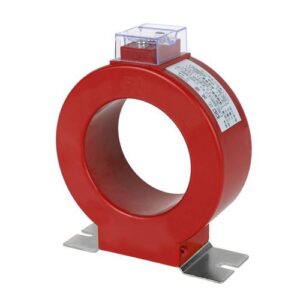What are differences between current transducers and Current transformers?
Current transducers and current transformers are utilised for the purpose of measuring electrical currents; yet, they exhibit distinctions in terms of their operational principles, applications, and inherent traits.
1. Working Principle of current transformer and current transducer:
Current Transformers (CTs) operate based on the fundamental principle of electromagnetic induction. The transformers are composed of a primary winding, which facilitates the passage of the current to be measured, and a secondary winding, which is utilised to measure the induced current. The current transformation ratio is determined by the ratio between the main and secondary windings.
Current transducers employ several concepts, such as the Hall effect, fluxgate, shunt resistors, Rogowski coils, or other magnetic phenomena, in order to directly quantify the current and transform it into a detectable output.
2. Measurement Range:
Current transformers (CTs) are frequently employed in applications that involve high currents, such as power distribution networks or industrial equipment, where the primary current is of considerable magnitude.
Current transducers are capable of being engineered to accommodate a broad spectrum of current levels, spanning from low magnitudes to elevated magnitudes, contingent upon the particular type and configuration.
3. Accuracy and Linearity:
Current transformers (CTs) are often characterised by a high level of accuracy and linearity within their designated range. High-accuracy applications in power systems, where precision plays a crucial role, frequently employ them.
The accuracy and linearity of current transducers may exhibit variability contingent upon their specific type and design characteristics. Certain forms of transducers, such as fluxgate current transducers, have the capability to offer high levels of precision and linearity. Conversely, there are other types of transducers that may possess certain limits in these aspects.
4. Size and Form Factor:
Current transformers (CTs) are generally characterised by their larger and bulkier physical dimensions, which can be attributed to the structure of their windings and the presence of a magnetic core. The purpose of their design is to form a circular or surrounding path around the conductor via which the electric current flows.
Current transducers are capable of being created in a multitude of sizes and form factors, encompassing both small and non-intrusive configurations.
5. Isolation:
Current transformers (CTs) provide galvanic isolation between the primary and secondary circuits. The implementation of isolation serves to prevent the establishment of a direct electrical connection between the measured current and the equipment utilised for measurement purposes.
Current transducers can be categorised into two sorts based on their galvanic isolation capabilities. While certain current transducers do provide galvanic isolation, it is important to note that not all types of current transducers offer this capability. The determination of feasibility is contingent upon the precise design and application criteria.
6. Applications:
CTs: Industrial Current transformers are commonly used for metering, protection, and control in electrical systems. Current-based relays and protective devices require them.
Current Transducers Current transducers are utilised in a variety of applications, such as industrial automation, motor control, battery monitoring, and renewable energy systems, among others.
In conclusion, while both current transformers and current transducers measure electrical currents, their working principles, ranges, accuracies, and applications are distinct. The choice between the two depends on the application-specific requirements and the required characteristics for precise and dependable current measurement.
Get in touch with our experts
Contact us directly via email info@hangzhiprecision.com or fill out the form below. We will respond as soon as possible.


